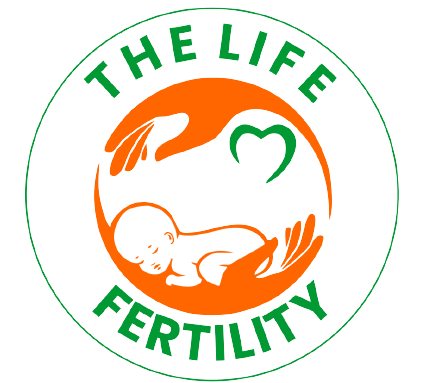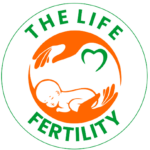Introduction
Making the decision to pursue In Vitro Fertilization (IVF) is one of the most significant steps on a fertility journey. It’s a path filled with hope, questions, and a deep desire for answers. For many, the most pressing question isn’t just about the process itself, but about the likelihood of success. You want to know your chances, and for that, it’s essential to understand IVF success rates by age.
While the numbers can be a powerful guide, they don’t tell the whole story. The age of a patient is undoubtedly the most critical factor, but it’s far from the only one. Your unique health profile, the specifics of your family planning goals, and the details of each embryo transfer all play a part.
This article will go beyond simple charts and statistics to provide a clear, comprehensive guide to IVF success rates by age. By breaking down the data and providing seven powerful, evidence-based insights, we’ll help you make informed decisions and take control of your path to parenthood.
Understanding the Data: A Closer Look at IVF Success Rates by Age
When you begin to research In Vitro Fertilization, one of the first things you’ll encounter is the statistics behind the procedure. The numbers can be daunting, but they also provide a clear picture of what to expect.
These figures, compiled and verified by organizations like the Society for Assisted Reproductive Technology (SART data), offer a transparent look at how IVF success rates by age are influenced by a woman’s natural biological clock. It’s important to remember that these are national averages, but they provide an excellent starting point for understanding your own potential for a successful live birth.
For women under 35, the numbers are highly encouraging. This age group sees the highest IVF success rates by age, with an average live birth rate per embryo transfer often exceeding 50%. This is because a woman in her early thirties typically has a strong ovarian reserve—a healthy supply of high-quality eggs—which greatly improves the chances of a viable embryo forming and successfully implanting.
As a woman enters the 35-37 age bracket, there is a slight, but noticeable, decline. While the IVF success rates by age for this group are still robust at an average live birth rate of 30-40%, many doctors will begin recommending earlier and more proactive intervention. This is the stage where the quality and quantity of eggs start to decrease at a faster pace, a natural part of the aging process.
When we look at IVF success rates by age for women from 38 to 40, we see a more significant drop. The average live birth rate per transfer falls to roughly 20-30%. The key reason for this shift is a combination of diminishing egg supply and, more importantly, a rise in chromosomal abnormalities in the remaining eggs.
These abnormalities can prevent an embryo from developing properly, leading to implantation failure or early miscarriage.
For women 41 and older, IVF success rates by age fall to their lowest point. For a 41-year-old, the live birth rate is typically around 10-20%, and it can drop to less than 5% by the time a woman is 44 or older. At this stage, the vast majority of eggs are chromosomally abnormal.
While the numbers can feel discouraging, they underscore why it’s so critical to work closely with a trusted fertility clinic and explore every available option. These numbers are an important guide, but they are not the only piece of the puzzle. Understanding what factors contribute to these outcomes is the next step to maximizing your own potential.
Insight #1: The Critical Role of Egg Quality
The most influential biological factor in determining IVF success rates by age isn’t the calendar year itself, but what’s happening within your body. Specifically, it’s the quality of your eggs. A woman is born with all the eggs she will ever have, and their quality and age are directly related. As a woman gets older, the likelihood of a viable egg declines.
Egg quality refers to an egg’s ability to be fertilized and develop into a healthy, chromosomally normal embryo. With advanced age, more eggs carry chromosomal abnormalities, making them unable to form a viable embryo.
This is the primary reason why IVF success rates by age decrease so dramatically after 35 and especially after 40. While a fertility doctor can retrieve a large number of eggs, a higher percentage of them will be of low embryo quality, which can lead to lower fertilization rates, failed implantation, and an increased risk of miscarriage.
Insight #2: Why Earlier Intervention Can Improve IVF Success Rates
One of the most powerful insights a patient can have is that time is a crucial factor in the fertility journey. While it may not feel urgent to start an in-depth conversation in your early to mid-thirties, starting sooner rather than later can significantly improve IVF success rates by age. Waiting can mean the difference between using your own eggs and having to consider other reproductive options.
An early consultation with a fertility doctor is essentially a proactive step in your family planning. By undergoing an initial fertility assessment, you can get a clearer picture of your ovarian reserve and egg quality.
This information allows for a more personalized treatment plan and can help you make a more informed decision about your path forward. It’s about being prepared and taking control of your future, giving yourself the best possible shot at a successful live birth.
Insight #3: How Advanced Technology Can Boost Success
While the natural decline in egg quality can be discouraging, modern assisted reproductive technology (ART) offers powerful tools to help. One of the most impactful is Preimplantation Genetic Testing, or PGT. This technique involves screening embryos for genetic abnormalities before an embryo transfer takes place.
PGT can’t improve the quality of an individual egg, but it can help identify which embryos are most likely to result in a successful pregnancy. For women with advanced maternal age where chromosomal abnormalities are a higher risk, PGT can be a game-changer.
By selecting only the healthiest, chromosomally normal embryos, a fertility clinic can significantly increase a woman’s final IVF success rates by age and reduce the chance of miscarriage. This process streamlines the fertility journey by ensuring that only viable embryos are transferred, saving a patient from the emotional and financial strain of failed cycles.
Insight #4: The Advantage of Frozen Embryo Transfers
For years, fresh embryo transfers were the standard. However, research and statistics now show that frozen embryo transfer success rates by age are often equal to, or even higher than, fresh transfers. This is a crucial insight for anyone undergoing the IVF process.
The reason is simple: a fresh cycle involves a woman’s body being stimulated with high levels of medication to produce eggs. This hormonal environment can make the uterine lining less receptive to an embryo.
By freezing the embryos and transferring them in a subsequent, unmedicated cycle, the body has time to return to its natural state. This creates a more optimal environment for implantation, improving the overall chance of a successful pregnancy, regardless of the patient’s age.
Insight #5: Lifestyle’s Impact on IVF Outcomes
While advanced assisted reproductive technology is key, a patient’s daily habits and overall well-being also play a significant role in improving IVF success rates by age. Your body is an intricate system, and nurturing it creates a better environment for a healthy pregnancy.
Focusing on diet and nutrition is an excellent place to start. A diet rich in leafy greens, whole grains, and lean proteins, and low in processed foods, can support hormone balance and overall reproductive health.
Similarly, incorporating moderate exercise can improve blood flow to reproductive organs. Perhaps most importantly, managing stress is crucial for emotional well-being throughout the fertility journey. High stress levels can affect hormone regulation, so practices like yoga, meditation, or finding a support group can be invaluable for maximizing your chances.
Insight #6: Considering Donor Eggs as a Pathway to Parenthood
For some individuals, especially those with advanced maternal age, the decline in egg quality may be too significant to overcome. When a woman is 40 or older, IVF success rates by age using her own eggs are quite low. This is where exploring other reproductive options becomes vital.
Using donor eggs from a younger, healthy woman can dramatically increase the likelihood of a successful live birth. The success rate is no longer tied to the recipient’s age but to the age of the donor, often resulting in IVF success with donor eggs at age rates of 70% or higher.
For many, this offers a new path forward—one with a much higher probability of success. A compassionate fertility clinic will guide you through this process and help you understand if this is the right option for your goals.
Insight #7: The Power of a Personalized Fertility Plan
This final insight is perhaps the most important: your fertility journey is unique to you. No two patients are the same, and what works for one person may not work for another. While general statistics on IVF success rates by age are a valuable starting point, they should not be seen as a rigid forecast for your own outcome.
The single best way to maximize your chances is through a customized plan developed with a knowledgeable fertility specialist. This plan will take into account your specific medical history, the cause of infertility, and your individual goals.
A personalized approach ensures that every step of the process—from the stimulation protocol to the number of embryos for embryo transfer—is tailored to your body, giving you the best possible chance for a successful live birth.
Conclusion and Next Steps
Understanding IVF success rates by age is a crucial part of any fertility journey, but as this guide shows, it’s just the beginning. While a woman’s age is the most significant factor, it is by no means the only one.
By combining an understanding of the statistics with insights into egg quality, lifestyle choices, and modern assisted reproductive technology, you can take a proactive, informed approach to your treatment. The key takeaway is that you are not just a number on a chart; a personalized, compassionate approach to your care can make all the difference.
What is the average IVF success rate by age?
IVF success rates by age vary significantly. For women under 35, the live birth rate per embryo transfer is around 50-60%. This rate gradually declines, dropping to approximately 20-30% for women aged 38-40 and to less than 10% for women over 43.
At what age is IVF not recommended?
While there is no official age limit, IVF success rates by age drop significantly after 43, using a woman’s own eggs, making the procedure less effective. At this stage, most fertility specialists will recommend other options, such as using donor eggs or pursuing other paths to parenthood.
What factors besides age affect IVF success rates?
While age is the most critical factor, other elements such as lifestyle, nutrition, overall health, the cause of infertility, the quality of both the egg and sperm, and the expertise of the fertility clinic all play a significant role in determining final IVF success rates by age.
Does IVF success decline with age?
Yes, IVF success rates by age do decline. The primary reason is a decrease in both the quality and quantity of a woman’s eggs over time. This leads to a higher rate of embryos with chromosomal abnormalities and a lower chance of a successful pregnancy.




